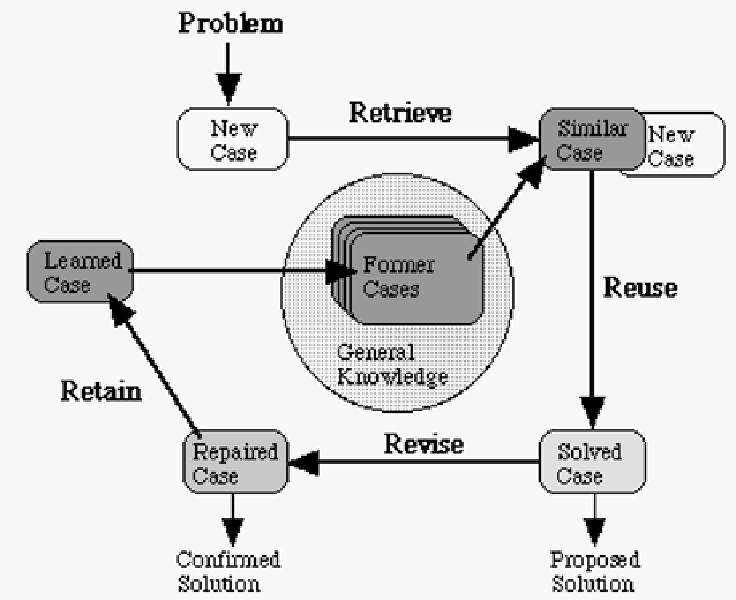Information Technology Reference
In-Depth Information
2
Methods
Within the ICONS project we have already developed an early warning system,
namely for the kidney function, which we have presented at last years MLDM
conference [12] (for complete details see [13]). Our method concerning the kidney
function combines Temporal Abstraction [7] with Case-based Reasoning [8, 9]. For
predicting influenza waves, we apply the same ideas and methods again.
2.1
Case-Based Reasoning
Case-based Reasoning means to use previous experience represented as cases to
understand and solve new problems. A case-based reasoner remembers former cases
similar to the current problem and attempts to modify solutions of former cases to fit
for the current problem. Figure 2. shows the Case-based Reasoning cycle developed
by Aamodt and Plaza [14], which consists of four steps: retrieving former similar
cases, adapting their solutions to the current problem, revising a proposed solution,
and retaining new learned cases.
However, there are two main subtasks in Case-based Reasoning [14, 15]: The
retrieval, the search for similar cases, and the adaptation, the modification of solutions
of
retrieved cases.
Fig. 2.
The Case-based Reasoning cycle developed by Aamodt

